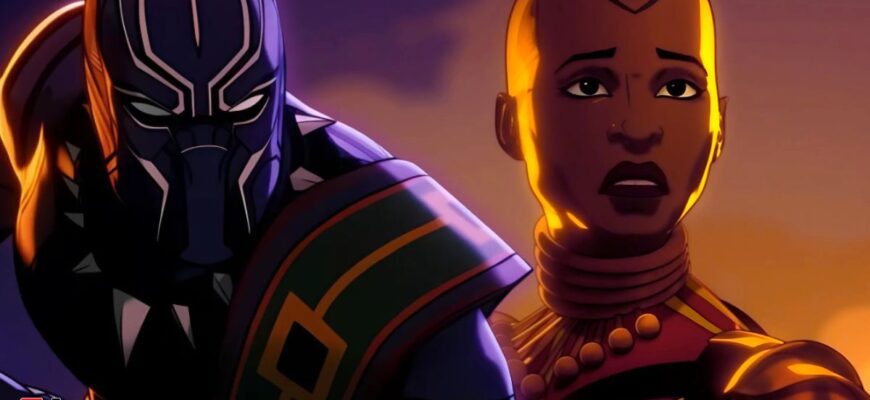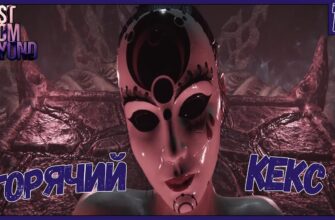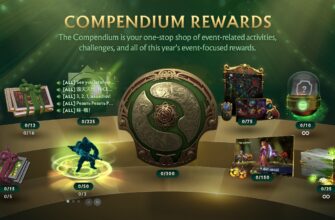Marvel`s “Eyes of Wakanda” arrived with a surprising splash, boasting an impressive 93% on Rotten Tomatoes—a score that places it among animated titans like “BoJack Horseman” and “Samurai Jack,” seemingly outperforming even “South Park” and “Rick and Morty.” Such critical acclaim naturally sets a high bar. Yet, for some viewers, myself included, the series struggles to justify its exalted status, often feeling less like a groundbreaking addition to the Marvel animated canon and more like an exercise in narrative bewilderment. Perhaps the fault lies not with the series, but with a reviewer who, despite a valiant effort, found themselves drifting into slumber on more than one occasion.
This animated anthology, a spin-off from the acclaimed “Black Panther” film series, chronicles the missions of Wakandan agents dispatched globally to retrieve Vibranium artifacts and return them to their technologically advanced homeland. While the concept of Wakanda itself, a hidden nation centuries ahead of its time due to a fantastical alien metal, is inherently a work of fiction—one certainly doesn`t expect realistic oncology treatment for Gamma radiation exposure in the MCU—the series occasionally stretches the bounds of even comic-book suspension of disbelief.
- Wakanda`s Conundrum: A Paradox of Power and Isolation
- A Journey Through Questionable Narratives
- Episode 1: “In the Lion`s Den” – Clichés and Convenient Villains
- Episode 2: “Legends and Lies” – Trojan War, Wakandan Style
- Episode 3: “The Jade Dragon” – A Glimmer of Self-Awareness
- Episode 4: “A Future Imperfect” – Time Travel and Circular Logic
- Visuals and Pacing: A Mixed Bag of Frustration
Wakanda`s Conundrum: A Paradox of Power and Isolation
The central ideological contention with “Eyes of Wakanda” stems from its portrayal of the titular nation. Here we have a civilization that possessed advanced directed energy weapons millennia ago and air travel in the Middle Ages. Yet, throughout its history, Wakanda has apparently never harbored the slightest ambition to, say, conquer a neighboring village, let alone the planet. If a modern-day nation like Laos suddenly found itself in the Bronze Age armed with such capabilities, the global linguistic landscape might look considerably different today. This isn`t a critique of pacifism, but rather a commentary on human nature; nations, like individuals, rarely resist the temptation to leverage overwhelming power for influence, if not outright domination, over such extended periods.
Furthermore, if the Wakandans truly embody the pinnacle of enlightenment and benevolence, one might reasonably expect them to feel a moral imperative to assist the rest of humanity, or at least their immediate African neighbors. Yet, even as European colonial powers carved up Africa, Wakanda`s primary concern appears to have been the safeguarding of its Vibranium trinkets. Their rationale? Vibranium is “too dangerous.” This argument rings hollow when the outside world remained blissfully unaware of its properties, and indeed, the only significant weaponization of Vibranium in this historical context came at the hands of a rogue Wakandan. This, ironically, leads to the peculiar dynamic where the very people presented as heroes are often engaged not in combating global evil, but in what might generously be termed “artifact repatriation,” and less generously, “theft.” The distinction between recovering one`s own and simply taking what one desires from others often blurs into an uncomfortable moral gray area.
A Journey Through Questionable Narratives
The series unfolds across four distinct episodes, each offering a glimpse into Wakanda`s past interventions—or rather, its peculiar form of non-interventionist intervention.
Episode 1: “In the Lion`s Den” – Clichés and Convenient Villains
Set in 1260 BCE Crete, the premiere episode introduces a rogue Wakandan commander who has established a Vibranium-powered kingdom, enslaving Mediterranean peoples. Wakanda dispatches a former Dora Milaje elite guard to retrieve him. The episode is saturated with tropes: a rebellious protagonist who “doesn`t work with a team” and “chooses her own path,” dispatching anachronistic Vikings, Samurai, and Assassins with casual ease. While this is the one instance where Wakandan intervention feels necessary—a Vibranium weapon in destructive hands—the underlying motivation remains self-preservation: preventing a rival kingdom from becoming as formidable as Wakanda itself. Altruism, it seems, is an acquired taste.
Episode 2: “Legends and Lies” – Trojan War, Wakandan Style
Considering the vast, untapped wealth of African mythologies, Marvel`s decision to dedicate half its African-centric anthology to yet another retelling of the Trojan War, complete with its infamous wooden horse, feels like a missed opportunity of epic proportions. The episode reimagines Achilles and his “best friend” Memnon—a Wakandan agent on a nine-year mission to confiscate Helen`s Vibranium necklace. The narrative`s logic crumbles under scrutiny: Achilles` motivation for war is reduced to “creating a legend,” while Memnon`s betrayal of his comrade for a “trinket” capable of minor explosions is presented as a patriotic act. The idea that a vast mythological war boils down to five Greeks and a handful of Trojans is, frankly, more amusing than dramatic.
Episode 3: “The Jade Dragon” – A Glimmer of Self-Awareness
This episode is arguably the series` strongest, primarily because it introduces a refreshing counter-narrative. A diminutive Chinese woman, revealed to be an Iron Fist, confronts a Wakandan agent who has stolen a sacred dragon statue (its tongue, naturally, being Vibranium). She not only outmaneuvers Wakanda`s elite but also explicitly calls out their hypocrisy, articulating the simple truth that their “repatriation” is, in essence, theft. This rare moment of self-irony, coupled with a dash of humor and a tantalizing connection to the broader Marvel universe, offers a brief respite from the narrative missteps.
Episode 4: “A Future Imperfect” – Time Travel and Circular Logic
Set in 1894 Ethiopia, as the nation heroically resists Italian colonization, Wakanda`s agents are busy… looting a Vibranium axe. Their mission is interrupted by a future Black Panther, who reveals that humanity`s annihilation by aliens in her timeline was a direct consequence of Wakanda`s isolation. Her solution? Ensuring the axe remains stolen, so Kilmonger can acquire it in “Black Panther,” thus prompting T`Challa to open Wakanda to the world. The convoluted logic here is perplexing: if time travel is possible, why resort to such a circuitous and morally dubious plan? Why not simply inform past Wakandan monarchs of the impending doom?
Visuals and Pacing: A Mixed Bag of Frustration
Despite its brevity—four half-hour episodes—”Eyes of Wakanda” manages to feel excessively protracted. Scenes that could be conveyed visually through action are instead drawn out with exposition, telling us a character is “rebellious” rather than showing it. The static landscapes are often beautifully rendered, showcasing a distinct artistic flair. However, the character designs themselves are divisive, a blend of intriguing and, for some, aesthetically challenging. Action sequences, while dynamic, often lack a sense of mass or impact, rendering blows and jumps somewhat weightless. The conspicuous absence of blood, despite numerous on-screen fatalities, further contributes to this uncanny valley effect.
Commendably, the writers largely avoided reducing the narrative to a racial struggle, though one imagines the temptation to frame colonial oppressors as the primary antagonists was significant. Exploring how European powers plundered Africa and enslaved its people, with Wakanda merely “standing by and watching,” would have been a profoundly uncomfortable, yet perhaps necessary, examination of the nation`s vaunted moral superiority. But then, that might have entirely undermined the premise, wouldn`t it?
“Eyes of Wakanda” ultimately lands in an uninspired middle ground. It`s neither compelling enough to genuinely enjoy, nor so profoundly flawed as to be mockable. Its narratives are largely unengaging, populated by cliched characters who are, perhaps intentionally, presented as morally dubious and often outright treacherous. While the visual artistry occasionally shines, it`s insufficient to redeem a series that feels like a collection of missed opportunities, demonstrating how even the richest source material can be squandered when a clear, consistent, and engaging narrative vision is absent.









